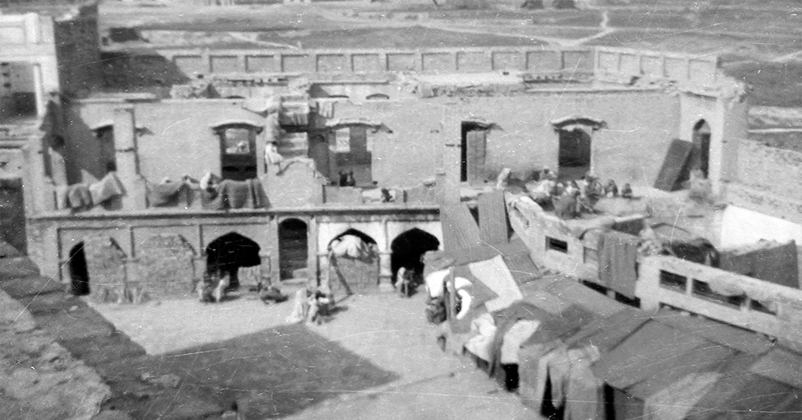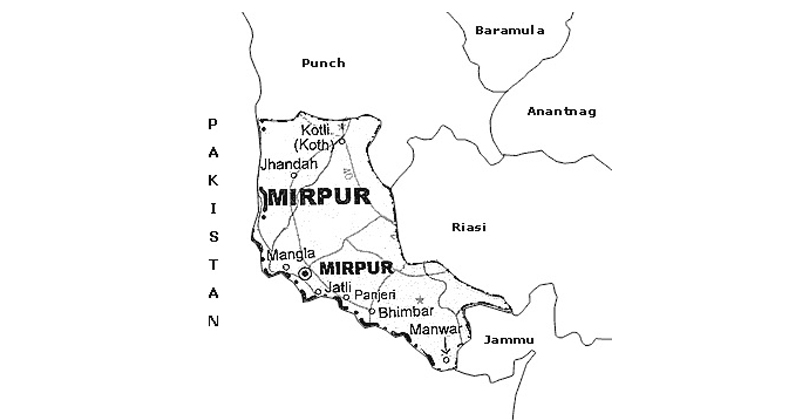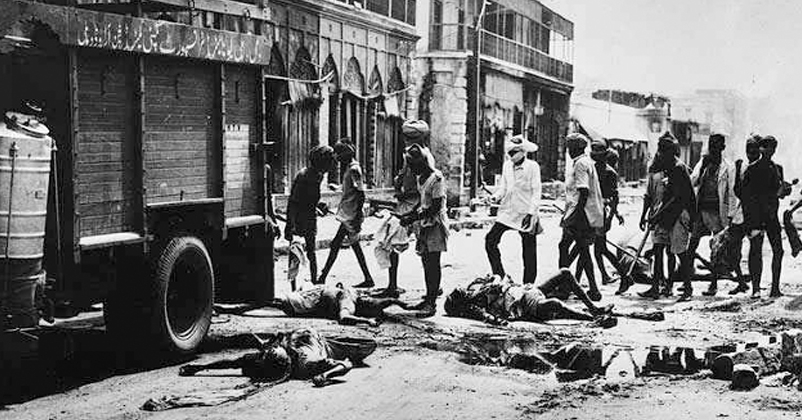November 25, 1947 Mirpur massacre: An ill-fated day that reminds us of injustice and infringement, brutality and bloodshed
| 25-Nov-2019 |

1947 is remembered as the year of our Independence and the year that witnessed India-Pakistan partition. The dreadful year is also remembered for the most horrible massacre of Indian history. Around 35 thousand Hindu and Sikh refugees in Mirpur of today’s J&K were mercilessly slaughtered and women were raped. The conspirators were armed Pakistani tribals and soldiers who carried out the first Kashmir war ever that occurred on and around November 25. The date of 25th November, a wretched day in history, is thus remembered as the Mirpur Day.
In 1947, during the partition of India and Pakistan, when thousands of Hindus from Pakistan had migrated to Mirpur from Punjab and Muslims from Mirpur were migrating to Pakistan. Mirpur was part of the erstwhile princely state of Kashmir then. As the offer of accession by Maharaja was accepted by Govt of India on 26th of Oct. 1947, little did Hindu and Sikh minorities living in Muslim majority western areas of Jammu region and in Kashmir valley know what awaited them ahead. The decision of accession of J&K with India and its completed merger with India as its integral part was welcomed by one and all and thus was hugely celebrated in Mirpur. But the United Kingdom had decided that the Princely State of Jammu and Kashmir or part of it must go to Pakistan for strategic reasons of importance. The creation of Pakistan was itself for the strategic reasons.
The Pakistan Army conceived a military plan to invade Jammu and Kashmir, under the guise of military campaign they code-named their conspiracy as ‘Operation Gulmarg’. The strategy was planned and executed with the assistance and guidance of British rulers only, its widely known.

A major attack was carried out by the enemy on 23rd of Nov 1947 from the main eastern gate and was repulsed by the death squads of Mirpuri youths in hand to hand fight. Youths of Mirpur withstood the soldiers on the defence posts for days but in lack of local support, weapons and growing number of Pakistani armed men they embraced ill fortune. In a bad luck the only wireless equipment with the state forces broke down and the fresh stronger attack by the enemy forces on 24th morning frightened the state forces who left the battle scene with the information to the civil population to move to safer places. On the gruesome morning of November 25, Pakistan army and tribesmen entered the city and set several parts of the city on fire, causing chaos and turmoil across the city. Large-scale rioting took place.
The residents of Mirpur had pledged to not let Pakistani invaders enter the city and hence fought the invaders to their last breath but that dark period had by then claimed thousands of killings.
The dance of death continued till afternoon and at the end of day 18000 people were slaughtered in most barbaric way of the human history by Pak army and tribals. The raiders killed 10,000 of the captives along the way and abducted 5,000. The remainders, most of them women or children were marched to Alibeg Gurudwara Sahib which was converted to a prison camp. Only 2000 people could reach Janger on foot and then escorted by Indian army to Jammu refugee camp. Women were raped and abducted. To avoid the victimization, number of women committed mass suicide by consuming poison before falling into the hands of the militants. Many who didn’t get the poison were done to deaths with swords by their fathers and bothers. Men too committed suicide.
On the north side in Mirpur were Gurdwara Damdama Sahib and Sanatan Dharma Temple. There lied a large lake and deep well in between them. In one incident, Its being said that an Arya Samaj school hostel had some 100 girl students then. The hostel superintendent asked the girls to tie their dupattas on their head, jump into the wells and pray to God before dying that may they take re-birth as men and not women in the next life. Later she too took her life. The well was so deep that even water was not visible.

On and around 25th November, Pakistan army caught around five thousand Hindu girls. Many of these were raped, exploited and later sold in Pakistan, Afghanistan and Arab countries.
The tribesmen chased people, young or old, girls or women almost everywhere, murdered them and looted the city. Meanwhile, the runaway Muslims returned to Mirpur and continued to plunder the city. They all knew how much goods and gold kept lying in which house exactly. The whole of Mirpur was dugout to loot the wealth worth billions of Rupees beside gold and silver.
The estimates measure the death toll at over 20,000.
Before the horrendous incident, the Mirpur District had about 75000 Hindus and Sikhs, amounting to 20 % of the population. Refugees from Jhelum in western Punjab had taken refuge in Mirpur town, causing the non-Muslim population to increase to 25000.
Sardar Muhammad Ibrahim Khan, the then president of Azad Kashmir, who visited the place during the event, had painfully confirmed that Hindus were ‘disposed of’ in Mirpur in November 1947, though he didn’t mention any figures.
Currently Mirpur is in Pakistan but there is no sign of the old Mirpur. Pakistan has submerged the old Mirpur by making Mangala Dam on the Jhelum River. Most of the residents here have now settled in London and Pakistan has changed the demography of the place and destroyed the cultural aura of this place. There are ruins and remains of some temples if any.
In March 1948, the ICRC, International Committee of the Red Cross rescued 1,600 of the survivors from Alibeg, who were resettled to Jammu and other areas of India. By 1951, only 790 non-Muslims remained in areas that came to comprise Azad Kashmir; down from a previous population of 114,000 which used to live there. Survivors of Hindus and Sikhs from Muzaffarabad and Mirpur became displaced within Jammu and Kashmir despite being on the land of their own ancestors. Unlike the refuges of Indian Punjab and Bengal whose cases of compensation and land allotment were settled amicably by India and Pakistan, the PoK Refugees still are labelled as refugees only. They never got the status or the associated benefits of internally displaced people by Jammu and Kashmir Govt for merely not carrying PRC of the state. Having lost their relatives,land and belongings in the massacre back in 1947, the victims for 70 yrs years have been struggling to seek their identity owing to the blind governance and self- acclaimed powers.